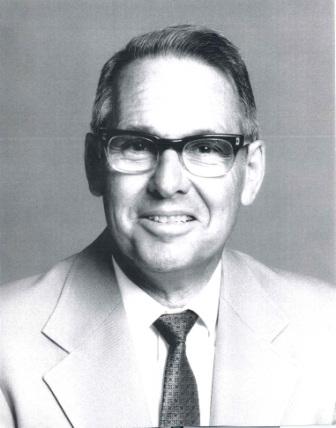

|

|
IN MEMORIAM
Benjamin Ferris Lownsbery
Professor of Nematology, Emeritus
UC Davis
1920—2000
Dr. Benjamin Ferris Lownsbery, known as “Ben” to those who knew him, was born July 28, 1920, in Wilmington, Delaware, and graduated from Wilmington High School. He began his academic career in 1938 at the University of Delaware, where he majored in Biology, and was awarded his B.A. Degree in 1942. During the next three years, he worked for the DuPont Chemical Co. at a gunpowder plant in Oklahoma.
In 1945, after World War II ended, he enrolled in the Graduate School of Cornell University where he came under the tutelage of Dr. William Mai. Dr. Mai introduced Ben to the golden nematode, Globodera rostochiensis, and the fascinating science of Nematology, which set his career interests for the rest of his life. He received the Doctor of Philosophy degree in 1950 and served briefly as an Assistant Professor at Cornell. That same year he joined the USDA in Beltsville, Maryland, where he worked on the Golden Nematode Project on Long Island. The next two and one-half years, Ben served as an Assistant Plant Pathologist at the Connecticut Agricultural Experiment Station in New Haven. Ben’s research interest focused on the cyst forming nematodes, and among other reports, he described a new species, Heterodera tabacum, which he co-authored with his wife, Joyce. In December 1953, he was recruited to join the newly established faculty of nematologists, which was administratively in the Department of Entomology, University of California, Davis. Ben was appointed a Lecturer in 1953 and retired as Professor of Nematology in 1983.
Dr. Lownsbery’s responsibility was to study nematodes affecting tree fruit and nut crops in California, with special attention to developing procedures for establishing proof of pathogenic effects on plants suffering from nematode attacks. One of his most noteworthy contributions was a solution for the bacterial canker disease of peaches caused by Pseudomonas syringae. Jointly with Drs. James DeVay and Harley English in the Department of Plant Pathology, they proved that the ring nematode, Criconemoides xenoplax, feeding on the roots of peach, predisposed the trees to the bacterium which ultimately killed the trees. In 1971, the American Society of Horticulture Science honored him for helping to develop nematode-resistant peach trees.
Dr. Lownsbery had an inquiring spirit in his research which impressed colleagues and fellow workers. It was known that a simple association of a given nematode species with plant injury was judged insufficient evidence to conclude nematodes were the cause of injury, even if the association was commonly found and widespread. He made many valuable contributions on this subject during his career and helped develop schemes to test pathogenicity of a given species of nematode by subjecting the host plants to logarithmically increasing numbers. Such procedures are routinely used throughout the world today. He was a productive researcher and author or co-author of more than 140 scientific publications.
Besides his research, Dr. Lownsbery taught formal courses in General Plant Nematology, Nematode Pathogenicity, and Nematode Pathogenicity to Plants, and directed graduate students in M.Sc. and/or Ph.D. programs. In all his contacts with students, he required the highest standards of thorough and well designed research. He earned the appreciation and respect of all his students, which is still clearly sustained after their graduations.
Dr. Lownsbery contributed in many other ways to the university community by his willingness to serve on campus committees and participate generously in departmental affairs. He was also active in the Society of Nematologists, serving as Editor-in-Chief of the Journal of Nematology from 1978-1980.
Benjamin F. Lownsbery was an avid gardener, enjoyed outdoor activities, especially hiking, and was a member of the Sierra Club and the Audubon Society. He died on July 14, 2000 at the age of 79. His wife Joyce passed away on November 6, 2001. Both are survived by their daughter, Jill Wilson and her husband Robert.
Harry K. Kaya
Howard Ferris
Dewey Raski